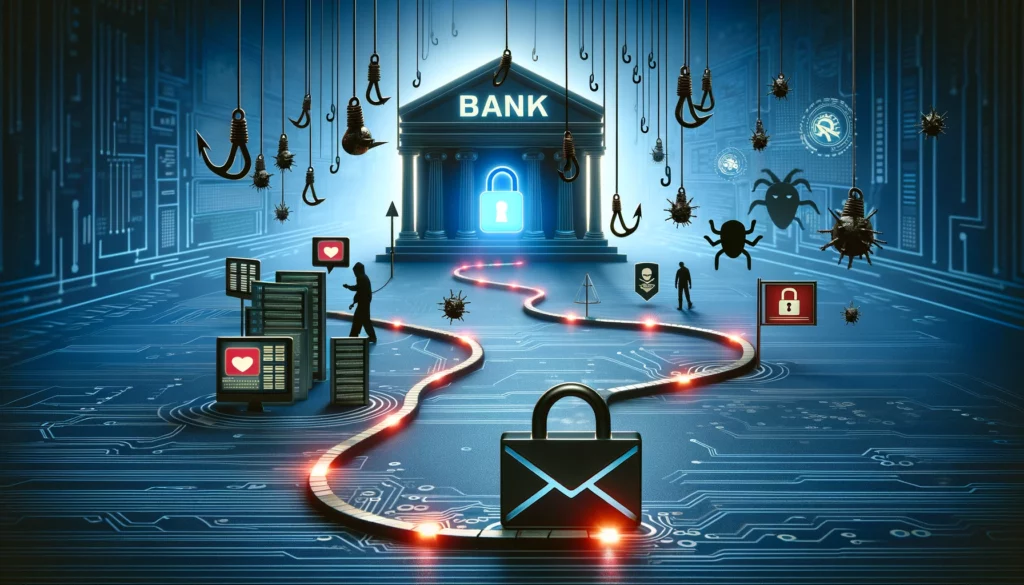In today’s rapidly evolving digital landscape, the threat of cyberattacks looms large over every sector, and the financial industry is no exception. With banks and financial institutions being prime targets for cybercriminals seeking to exploit vulnerabilities and gain access to sensitive information, it’s imperative for these entities to not only invest in robust cybersecurity measures but also consider the value of cyber insurance as an additional layer of protection.
Cyber insurance, also known as cyber liability insurance or cyber risk insurance, is a specialized form of insurance designed to help businesses mitigate the potentially devastating financial losses resulting from cyber incidents. These incidents may include data breaches, ransomware attacks, network outages, and other malicious activities carried out by cybercriminals.
For banks, which serve as custodians of vast amounts of sensitive customer data and conduct numerous transactions daily, the ramifications of a successful cyberattack can be severe. Not only can such attacks lead to financial losses, but they can also damage a bank’s reputation, erode customer trust, and expose it to regulatory fines and legal liabilities.
So, the question arises: Is your bank covered against these digital threats?
The reality is that while many banks have made significant investments in cybersecurity measures to protect their systems and data, no system is entirely foolproof. Cybercriminals are constantly evolving their tactics, making it challenging for even the most diligent organizations to stay ahead of the curve. In the event of a breach or cyber incident, having cyber insurance can provide a safety net to help mitigate the financial fallout.
Cyber insurance policies typically offer coverage for a range of expenses associated with a cyber incident, including:
- Data Breach Response Costs: This may include expenses related to investigating the breach, notifying affected customers, providing credit monitoring services, and managing public relations.
- Cyber Extortion and Ransomware Payments: In the unfortunate event of a ransomware attack, where cybercriminals encrypt a bank’s data and demand payment for its release, cyber insurance can cover the ransom payment and associated expenses.
- Business Interruption Losses: If a cyber incident disrupts normal business operations, resulting in financial losses, cyber insurance can help cover these losses and expenses incurred during the downtime.
- Legal and Regulatory Costs: Cyber insurance can help cover the costs of legal defense, settlements, and regulatory fines that may result from a cyber incident, ensuring compliance with data protection laws and regulations.
- Cyber Liability Protection: This includes coverage for third-party claims arising from a cyber incident, such as lawsuits filed by customers or business partners affected by a data breach.
However, it’s essential for banks to carefully review and tailor their cyber insurance policies to ensure they provide adequate coverage for their specific risks and exposures. Not all cyber insurance policies are created equal, and coverage terms and limits can vary significantly between insurers.
Moreover, cyber insurance should not be viewed as a substitute for robust cybersecurity measures. Instead, it should complement a comprehensive cybersecurity strategy that includes regular risk assessments, employee training, penetration testing, and the implementation of industry best practices for data protection and incident response.
In conclusion, cyber insurance can be a valuable tool for banks to manage the financial risks associated with cyber threats in today’s digital age. By investing in cyber insurance coverage that aligns with their risk profile and business needs, banks can better safeguard their assets, reputation, and customer trust against the ever-present threat of cyberattacks. As cyber threats continue to evolve, cyber insurance remains an essential component of a proactive approach to cybersecurity for banks and financial institutions worldwide.

Penetra Cybersecurity is at the forefront of defending the digital frontier, providing cutting-edge solutions to protect businesses and organizations from the ever-evolving threats of the cyber world. Established with a mission to create a safer internet for everyone, Penetra leverages a blend of advanced technology, expert knowledge, and proactive strategies to stay ahead of cybercriminals.
Ready to take the next step towards a more secure future? Schedule a consultation with us today and discover how we can help protect what matters most to you. Don’t wait until it’s too late—with Penetra Cybersecurity, your business isn’t just secure; it’s imPenetrable.




